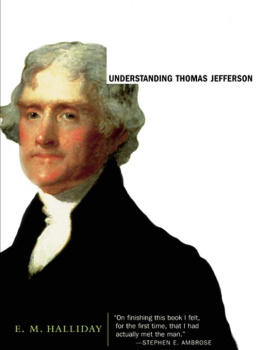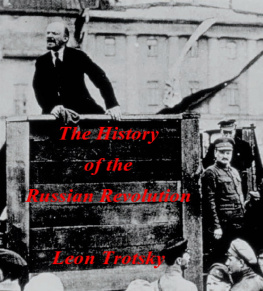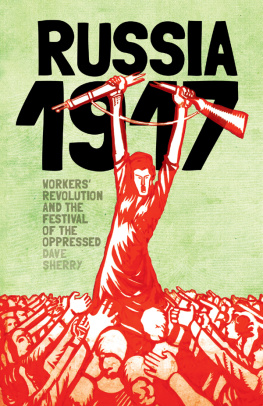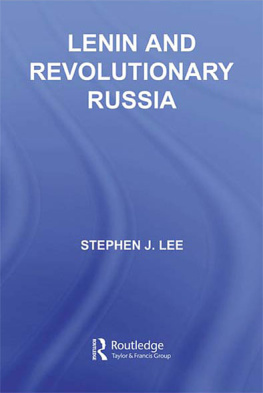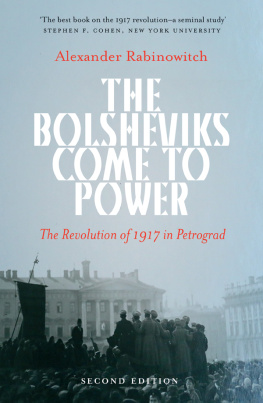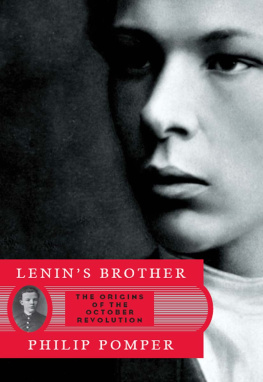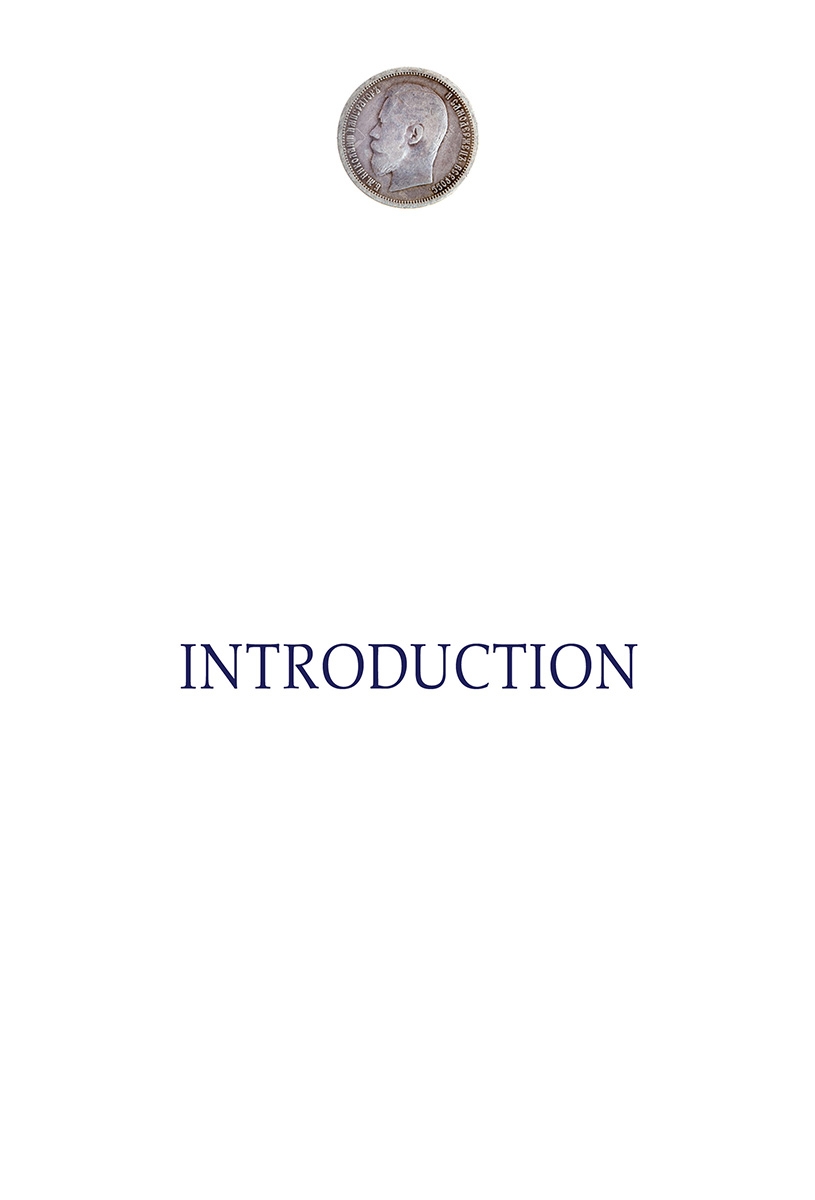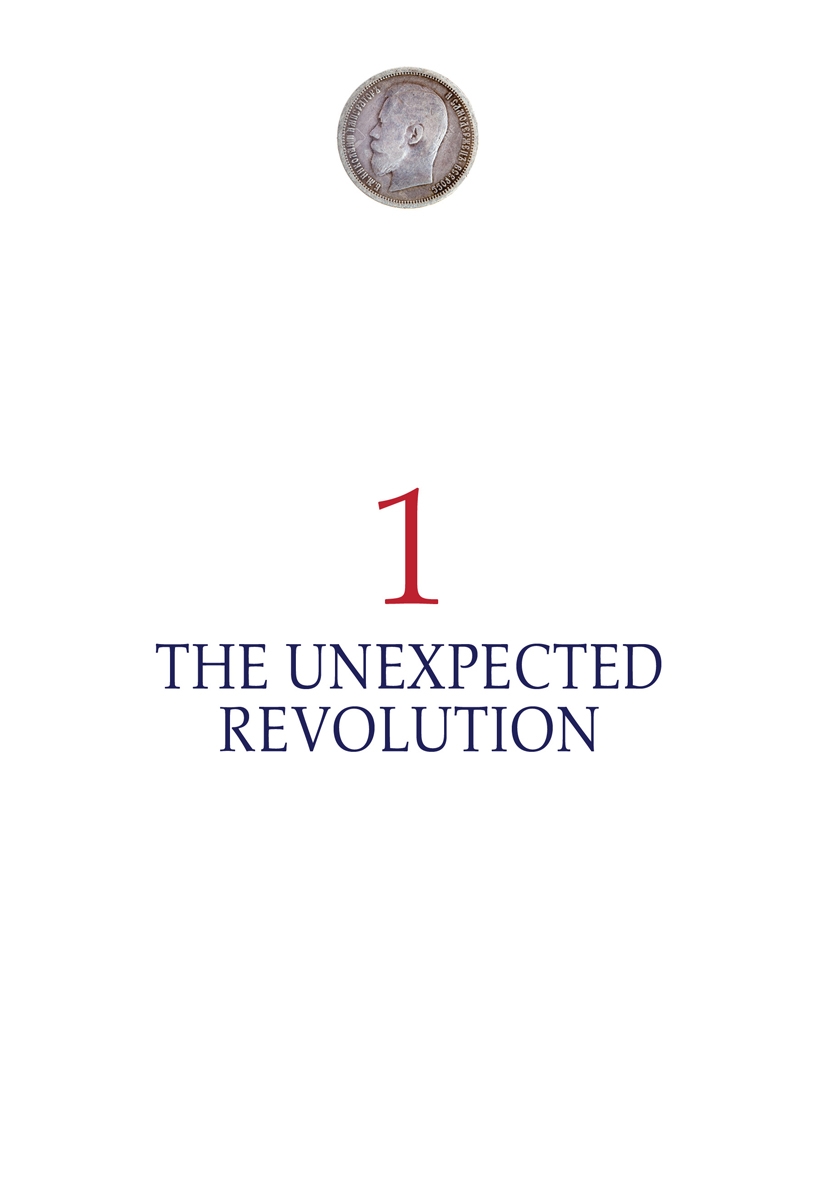The turbulent events that overtook Russia in 1917 are often called one of historys great turning points. In March of that year, a corrupt, outdated, beleaguered autocracy - the 300-year-old Romanov dynasty - was overthrown by an uprising of Russias long-oppressed masses. During the next few months, Alexander Kerensky and other liberals in the provisional government attempted to adopt reforms. But the continuing hardships of World War I and the pressure of a radical minority, Vladimir Lenins Bolsheviks, proved too much for them. In the relatively bloodless coup dtat of November 7, Lenin and his associates seized control of the state.
To understand and appreciate these historic events, one must look back to the nineteenth-century origins of Russian revolutionary thought, which can be traced to events that led to the abortive uprising of 1905 and the subsequent, short-lived reforms, and to the devastating war with Germany that caused an empire to stagger. The events were influenced by such personalities as the ineffectual Czar Nicholas and his domineering wife Alexandra, the sinister Grigori Efimovich Rasputin and his aristocratic murderer Prince Felix Yusupov, and - most importantly - the two men from nearly identical backgrounds who took such different paths, Kerensky and Lenin. These two, more than anyone else, guided the country in the days and years that followed the revolution.
In time, of course, the early attempts to liberalize the country gave way to dictatorship, repression, and cruelty. Even today, Lenin remains a hero to the Russian people, who have never fully known democracy or freedom. They have lived for centuries under government control in one form or another. The revolution of 1917, however, gave birth to communism, which went on to infect other countries and drive international conflicts for the remainder of the twentieth century.
On March 9, 1917, a mounted Cossack winked at a striking workman as he galloped past him down a street in Russias imperial capital, Petrograd St. Petersburg until Czar Nicholas renamed it at the beginning of World War I. It may have been the most significant wink in modern history. It meant that Czar Nicholas IIs best soldiers were going to abandon him down when the crucial moment came to suppress the mobs of rebellious workers who roamed the city on that Friday morning - the last Friday a czar would ever sit on the Russian throne.
The odd thing about the revolution that abruptly ended 300 years of rule by the House of Romanov was that no one planned it, and, therefore, no one expected it or foresaw just how it would unfold.
By the first weeks of 1917, it was already clear to almost everyone - except perhaps the czar and his wife - that the hundreds of thousands of factory workers in Petrograd were in a dangerously hostile mood. Labor strikes were increasing in number and intensity. For two and a half years, the nation had been at war with Germany and people were exhausted. Yet, a revolution to overthrow the government did not seem likely. The police of the capital city had been reinforced by a garrison of about 160,000 soldiers, all well-armed, and an elaborate plan had been designed to put down any revolt by striking laborers. As for the workers, despite their disgust with the war and their government and bitter discontent with the scarcity and cost of food and fuel, they did not consciously feel that the time was ripe for a violent overthrow of the regime. Yet active revolutionaries had infiltrated the manufacturing plants of Petrograd. It had always been assumed that such agitators would have planned the whole revolution step by step.
Many revolutionary leaders, however, were absent in March 1917. This was most notably true of the communists, or Social Democrats, as they were then called. Lenin, their guiding genius, was in Zurich, Switzerland, not optimistic about the chances of a revolution in Russia. Leon Trotsky, soon to become his chief lieutenant, was in New York City, where he helped edit a revolutionary newspaper. Stalin, the young man who one day would be the communist dictator, was in exile in Siberia. Although some other revolutionaries of distinction were present, they were, so to speak, absent in mind: They failed to gauge the mood of the people, and especially, the mood of the soldiers.
A good example was Alexander Kerensky, a brilliant young labor leader and member of the Russian legislative council, the Duma. At the end of February, he made bold speeches before that body suggesting that removal of Nicholas II - by terrorist methods if there is no other way - would solve the national problem; he was not thinking in terms of mass revolution. I hope that Duma man Kedrinsky, wrote the czarina to the czar, getting the name wrong, will be hung for his horrible speeches. It is necessary, and it will be an example.
But neither assassinating Czar Nicholas nor hanging men like Kerensky was the solution that history had in store.
On the cold Thursday morning of March 8, disturbances flared in the workers sections of Petrograd. A number of women waiting in long queues in front of bakeries grew angry when they were told there was no more bread. That same morning, women employed at several Petrograd textile plants went out on strike. They were soon followed by thousands of men from the metal factories. The discontented workers began a demonstration, carrying banners that said, We want bread. A crowd formed around them, and soon agitators were speaking on street corners, and people were shouting down with the war in addition to we want bread. Police reserves were called out, but so far, there was little violence, although occasionally someone would pick up a chunk of ice from the snow-covered streets and hurl it at a passing officer.
In 1917, Russia was still using the Julian calendar, thirteen days behind the more prevalent Gregorian calendar. Thus, according to the old Russian calendar, the revolution began on February 23, and the overthrow of the czarist regime is sometimes referred to as the February revolution. For our purposes, we will use Gregorian dates.
By the morning of March 9, the streets of the city were jammed with crowds of strikers - estimated at close to 200,000, half of Petrograds industrial labor force. It was apparent that a massive strike was developing, and the authorities nervously called out the Cossacks.
The Cossacks, on horseback and carrying their sabers, were the traditional instrument of the Russian monarchy for punishing troublesome citizens. They enjoyed special privileges in the army, and many a time, they had shown how fiercely and efficiently they could carry out the czars orders. On March 9, 1917, they pranced their horses into the crowds as usual or broke into a galloping charge when ordered to do so by their officers. But the striking workers noticed a difference: The Cossacks exercised care with their sabers, left their firearms at their sides, and looked down on the upturned faces with a surprising lack of ferocity. Then came the wink that was to become famous. Shortly thereafter, the word flashed around that a Cossack patrol had driven off policemen who were beating up workers on a street corner. The next time a troop of Cossacks galloped through a crowd, they were greeted with hurrahs.
The military commander of Petrograd was baffled, but there seemed to be nothing to do but call out more soldiers. Most of the infantrymen, however, turned out to be even more inclined than the Cossacks to favor the people. They carried their bayoneted rifles at a harmless angle, and many of them started up friendly conversations with the strikers. Most of these soldiers were not professionals but peasants who had been forced from their villages to replace brothers and cousins killed or wounded in the war. They disliked military service and felt sympathy for a crowd of fellow citizens whose only demands seemed to be for bread and an end to the war.


